
NPS/Jim Peaco The Fishing Bridge Museum and Visitor Center is located one mile off the Grand Loop Road on the East Entrance Road. Its distinctive stone-and-log architecture, known as "parkitecture," became a prototype for park buildings all around the country. The Fishing Bridge Museum was completed in 1931. Built of native rock and stone, it appears to rise out of a rock outcrop. The structure was built to reflect the beauty of nature itself. Approaching from the parking lot, it was designed so that one could see through the building to Yellowstone Lake, hence the notion of focussing on the natural resource that the building was created to interpret. It would eventually become a prototype of rustic architecture in parks all over the nation and was declared a National Historic Landmark in 1987. When automobiles replaced stagecoaches as the main means of transportation through the park, people were no longer accompanied by a guide. The museum was built as a "Trailside Museum," allowing visitors to obtain information about Yellowstone on their own.
Image Gallery
Visitor Services
Additional Lake Area Information
Fishing Bridge & Lake Hikes
Hikes in this area provide views of Yellowstone Lake and the surrounding mountains. 
Fishing Bridge, Lake, and Bridge Bay
Explore the shores and waters of Yellowstone Lake. 
Accessibility
Discover Yellowstone's accessibility resources like the NPS Mobile App, Access Pass, and assistive services. 
Ranger Programs
Join a park ranger to further your understanding about this special place. 
Junior Ranger
Now available to download for completing at home, this is a great way to experience Yellowstone National Park for you and your family. Lake Area Knowledge
Yellowstone Cutthroat Trout
Yellowstone cutthroat trout are the most widespread native fish in the park. 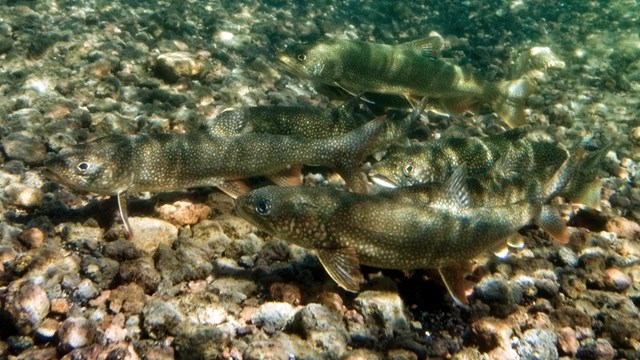
Lake Trout
Lake trout prey on Yellowstone cutthroat trout. 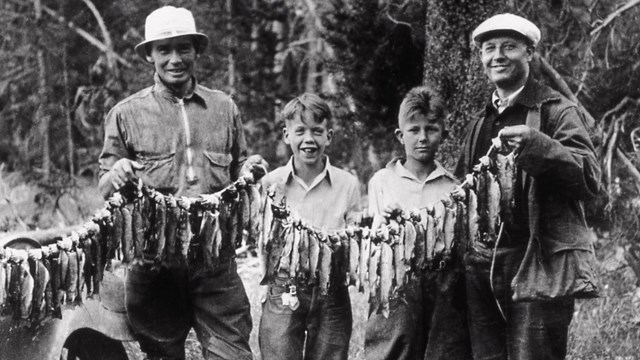
Yellowstone Lake Fish Hatchery
Fishing has a long history in Yellowstone. The Lake Fish Hatchery produced trout that were used to stock waters in the park and elsewhere. 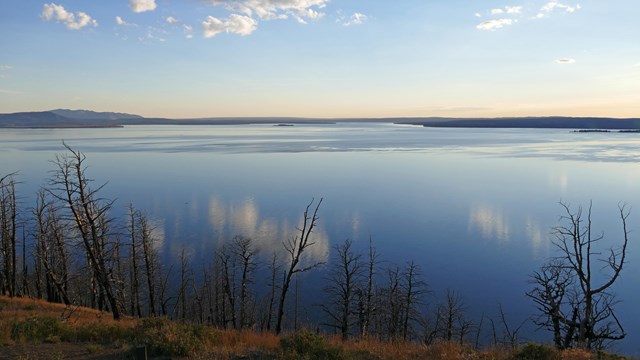
Yellowstone Lake
Delve into facts about North America's largest high-elevation lake. 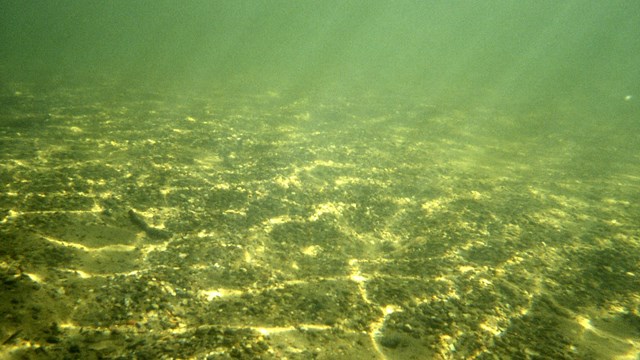
Yellowstone Lake Geology
Discover a bit of what dynamic processes are going on below the lake's surface. 
Lakes & Ponds
More than 600 lakes & ponds comprise approximately 107,000 surface acres in Yellowstone. 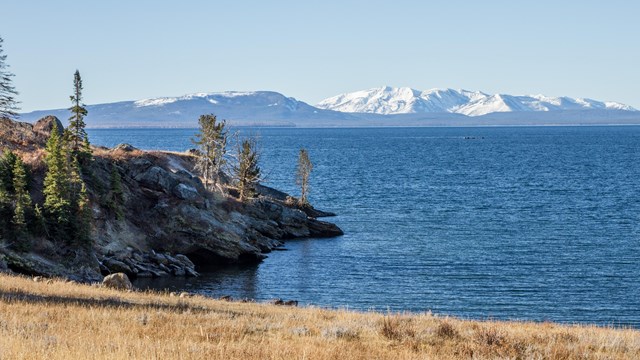
Hydrothermal Dynamics of Lake Project
Explore how the Hydrothermal Dynamics of Lake (HD-YLake) Project studies the hydrothermal system located beneath Yellowstone Lake. 
Yellowstone Lake
The earliest intact archeological deposits in the park have been found at a site on the shore of Yellowstone Lake. Other Lake Area FacilitiesVisitors can receive backcountry permits, boating permits, and general park information at the ranger stations at Lake and Bridge Bay. Lake Ranger StationAfter a decade of military administration in Yellowstone, Congress created the National Park Service in 1916. Ranger stations began to replace soldier stations throughout the park. The Lake Ranger Station was completed in 1923. The first director of the National Park Service, Steven Mather, suggested that the station should blend in with its natural and cultural environment. A local woodsman used pioneer building techniques to give the station its "trapper cabin" style. With park architects, Superintendent Horace Albright designed a large octagonal "community room" with a central stone fireplace. This rustic hall served an informational function by day, and, in the evening, it became the scene of a folksy gathering around a log fire. 
Visitor Centers
Step inside a visitor center and explore the exhibits and interpretive offerings, or talk to a ranger. |
Last updated: July 28, 2025


